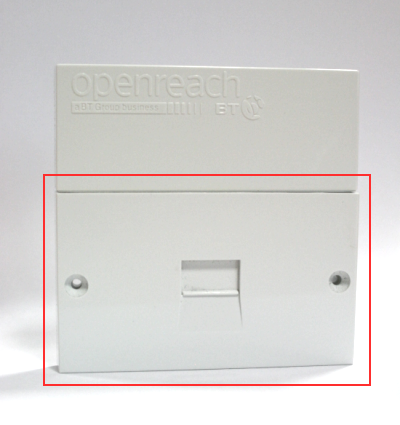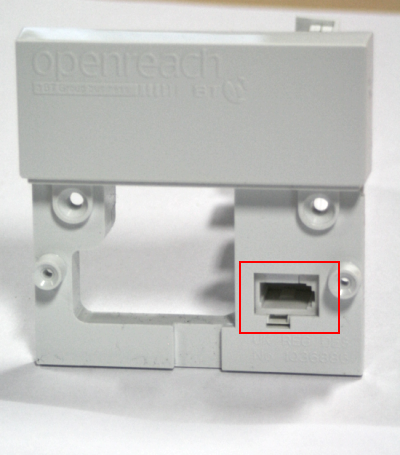Turn on suggestions
Auto-suggest helps you quickly narrow down your search results by suggesting possible matches as you type.
Showing results for
Testing From The Master Socket
Testing From The Master Socket
Topic Options
- Subscribe to RSS Feed
- Mark as New
- Mark as Read
- Bookmark
- Subscribe
- Printer Friendly Page
- Report to Moderator
- Plusnet Community
- :
- Library
- :
- Testing From The Master Socket
Testing From The Master Socket
23-04-2009
12:04 AM
This article shows you how to use the test connection in your master telephone socket to help diagnose broadband problems.
- Locating your master telephone socket
- I don't have a master socket!
- Running a master socket test
- Exposing the test socket
- What tests should you run?
- What to do next
Locating your master telephone socket
The first step is to identify which telephone socket in your property is the master one.
If you can find where the telephone line enters your property from the street, it is normally the telephone socket physically nearest that entry point.
Extension sockets have a solid faceplate. The more modern master telephone sockets have a detachable section as shown in the following photo:

I don't have a master socket!
Nearly all properties have a master socket, although some may look a little different; they do not always have a detachable section like the one shown in the photo above. Sometimes they are located in the attic or a basement.
If you still cannot find your master socket, test your connection with each available socket in turn, and ensure all other devices are removed from the line when doing this.
Running a master socket test
If you are not already connecting your broadband equipment to the master telephone socket, try connecting to it with all other telephone devices removed from your phone line. If this resolves the issues you are seeing, then add the equipment back one device at a time to try and isolate what is causing the problem and take a look at our Guide to Fitting Microfilters.
Exposing the test socket
To expose the test socket, remove the screws on either side of the detachable section of the faceplate and gently pull it forwards away from the main socket, taking care not to disturb any wiring in place on the back of the detachable section.
You will now be able to see the test socket as shown in the following photo:

To make use of the test socket, connect your microfilter to the test socket and connect your broadband equipment to the microfilter as you normally would.
What tests should you run?
The tests to run will depend on the type of problem you are experiencing with your broadband connection. The following advice will help you determine how using the test socket can progress your issue.
Speed problems
If your connection is slow, or slower than expected, testing in the test socket will allow you to rule out any internal wiring from the list of potential causes.
Before connecting to the test socket, make a note of the connection speed shown in your router or modem. Try connecting to the test socket and compare the results.
If you are connecting at a higher speed in the test socket, it's likely that your internal wiring is the source of the problem and in turn is causing your speed to be reduced.
Please note: If your line connects at a higher speed in the test socket, you will not see an immediate increase in download speed. Equipment in your telephone exchange monitors your connection and it will typically take 3 days for your download speed to increase in line with your connection speed. For more information see our Advanced Guide to Broadband Max.
No ADSL signal or Intermittent connection
If you find that your broadband equipment isn't picking up a broadband signal or your connection drops out, using the test socket will isolate any issues caused by internal wiring in your home or other devices on your phone line.
If you get a steady broadband signal when connected to the test socket, try again in the master socket with all devices removed, including telephones, fax machines, alarms and equipment such as Sky boxes.
What to do next
If your broadband connection only works correctly in the test socket, the best course of action is to seek assistance from an IT Technician, telephone or alarm engineer. We cannot guarantee that a BT engineer will resolve internal wiring problems and a visit would incur a service charge.
It's worth checking that phone calls made over your telephone line are clear and noise free. If there are any problems making calls, report this to your telephone provider.
If using the test socket makes no difference to your broadband problem, please raise a fault using our Broadband Faults Checker or by calling our Support Team.
6
Comments
75031
Views
